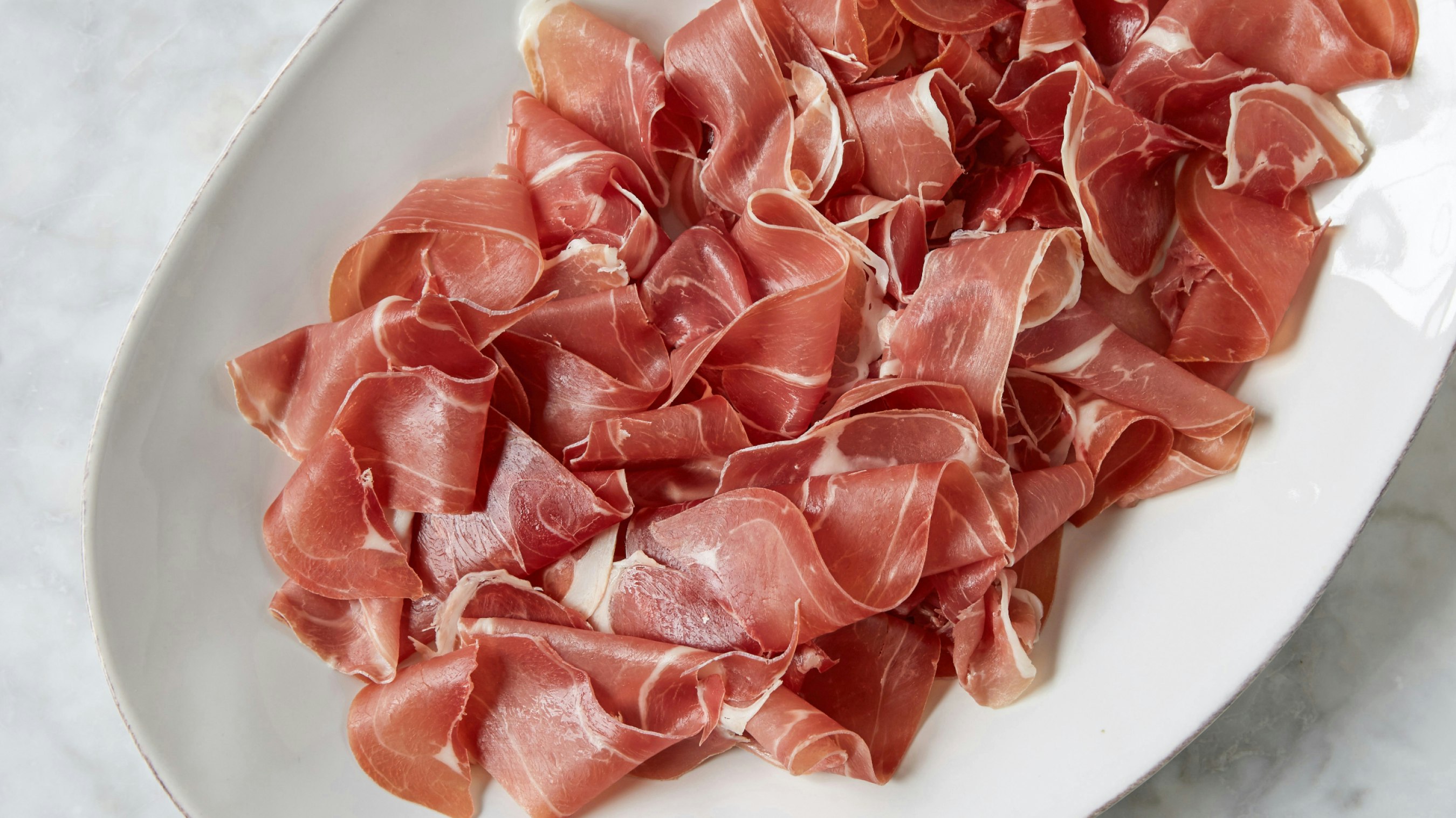FAQ: All About Prosciutto
Hosting & EntertainingMAR 12, 2024
Prosciutto, the beloved Italian charcuterie, has graced tables for centuries. Its salty, silky slices sparking joy and tantalizing taste buds. Whether draped elegantly over melon or tucked into a sandwich, it's a timeless culinary delight. But what exactly is prosciutto, and why is it so special?
How is it made?
To get these succulent slices, a leg of ham or wild boar is cleaned and salted, then let sit for two months until the juices are drained. Then, it’s washed again and hung to dry in a cool environment. How long a ham is hung and dried can depend totally on region and size, but they can be dried for up to 18 months.
What exactly is Prosciutto?
There are plenty of imitations, but the real deal is Italian dry-cured ham, typically thinly sliced or left whole on the leg. The uncooked version that you’re probably most familiar with is known as prosciutto crudo–there’s a cooked version that varies in taste in texture known as prosciutto cotto, but for our purposes, we’re talking about the former.
Two of the most famous prosciutto varieties out there are Prosciutto di Parma and Prosciutto San Daniele–both of which hold DOP (Protected Designation of Origin) designations, meaning that the method and ingredients that go into these two regional delights are name-protected and cannot be made elsewhere. Place has a lot to do with flavor, so these two favorites vary slightly in taste and color.
Prosciutto, the beloved Italian charcuterie, has graced tables for centuries. Its salty, silky slices sparking joy and tantalizing taste buds. Whether draped elegantly over melon or tucked into a sandwich, it's a timeless culinary delight. But what exactly is prosciutto, and why is it so special? In this article, we're unwrapping the heritage of this cured meat and exploring its various forms to answer some of your most burning questions about prosciutto. From its raw nature to its porky origins and the quest for the finest, we'll embark on a flavorful journey through the world of prosciutto. So, let's dive in and uncover the delicious details!
Tell me more about Prosciutto di Parma!
You’ve probably heard of the most famous of hams, Prosciutto di Parma. Just as Parmigiano Reggiano is called the King of Cheese, this world-renowned charcuterie is known as the King of Ham. With a history that dates back to the ancient Roman Empire, its timeless flavor has hardly changed over the centuries. This classic boasts a slightly nutty flavor and rich gaminess, with a melt-in-your-mouth silky texture that makes it a must-have for any Italian spread. For a prosciutto to be considered Prosciutto di Parma, it must be aged in the region surrounding Parma, Italy, and made from animals raised in accredited, regional farms.
Murray’s Prosciutto di Parma is made using a traditional dry-curing process where raw legs of pork are carefully selected, hand-trimmed, and salted before aging for at least 20 months. The curing and aging process follows a time-honored tradition and is heavily monitored to ensure the quality of the ham.
Historically, Prosciutto di Parma was cured using a process that translated to the Italian for “open the window, close the window.” Where meats were aged in large rooms with high windows on either side.
Depending on the meat being cured, the windows were opened and closed to control the temperature and humidity of the room. The same concept is used in today’s production methods, as air is piped in through the roof to cure the meat.
What is the best way to eat Prosciutto crudo?
Serve them charcuterie-style with cornichons and crusty bread, layer them in a sandwich, or add them in elegant ribbons across your cheese board. Some would argue simply eating the meltingly mouthwatering slices on their own is enough, however wrapped around a traditional melon slice is always a favorite – the delicate fruit-flavor amplifying the fruity and savory notes of the ham. At Murray’s, we suggest pairing with some of the region’s other classics, like Murray's Balsamic Vinegar or Murray’s Parmigiano Reggiano.
What about Prosciutto san Daniele?
From the small town of San Daniele del Friuli, tucked between the Dolomites and the Adriatic Sea, comes silky, rich Prosciutto San Daniele. A moist, cool climate and plenty of sea salt create a cured ham that, even after months of aging, is sweet and delicate with a porky flavor and a velvety texture. This prosciutto tends to have a slightly darker color and a sweet, mellow profile. Because of the moist, cool climate of the area where it’s made, it maintains a mild flavor and delicate texture. Typically aged for 13 months, this mouthwatering favorite pairs perfectly with the crisp white wines from the same region.
This prosciutto is made from the legs of Italian Large White, Landrace, and Duroc pigs that are born and raised in Italy. Before the curing process begins, the ham legs are checked to ensure they are the right size and shape. They are held in a refrigerated chamber to firm the meat for at least 24 hours—more time is added the heavier the leg is. Next, the ham is pressed and transferred to a cool room with 70 to 80 percent humidity. Four months later, the ham is washed and set to mature for at least 13 months.
As it matures, it is routinely tested to ensure its quality. Two specific tests are performed: legs are struck to check their firmness and pricked with a horse-bone needle to sample the aroma and determine how its aging. Once legs are finished maturing and ready for sale, they are branded with the San Daniele seal.
This prosciutto was awarded DOP (Protected Designation of Origin”) status in 1996, meaning it must be produced in San Daniele del Friuli to be labeled as such.
Share
